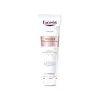What's inside
What's inside
 Key Ingredients
Key Ingredients

 Benefits
Benefits

 Concerns
Concerns

 Ingredients Side-by-side
Ingredients Side-by-side

Water
Skin ConditioningEthylhexyl Methoxycinnamate
UV AbsorberGlycerin
HumectantGlyceryl Stearate Se
EmulsifyingButyl Methoxydibenzoylmethane
UV AbsorberPropylene Glycol
HumectantCetearyl Alcohol
EmollientDimethicone
EmollientMethyl Methacrylate Crosspolymer
Potassium Cetyl Phosphate
EmulsifyingCitrus Aurantium Dulcis Peel Oil
MaskingCetyl Alcohol
EmollientSimmondsia Chinensis Seed Oil
EmollientTitanium Dioxide
Cosmetic ColorantPhenoxyethanol
PreservativeEthylhexyl Salicylate
UV AbsorberAscorbyl Tetraisopalmitate
AntioxidantArachidyl Alcohol
EmollientCeteareth-25
CleansingRosa Moschata Seed Oil
EmollientTocopheryl Acetate
AntioxidantBehenyl Alcohol
EmollientOenothera Biennis Oil
EmollientImidazolidinyl Urea
PreservativeXanthan Gum
EmulsifyingHydroxyacetophenone
AntioxidantHydrogenated Polyisobutene
EmollientArachidyl Glucoside
EmulsifyingTetrasodium EDTA
BHT
AntioxidantGinkgo Biloba Leaf Extract
Skin ConditioningVitis Vinifera Seed Extract
AntimicrobialTrimethoxycaprylylsilane
SmoothingHydrogenated Castor Oil
EmollientHydrogenated Castor Oil Hydroxystearate
Skin ConditioningPPG-5-Ceteth-10 Phosphate
EmulsifyingPotassium Sorbate
PreservativeSodium Benzoate
MaskingAscorbyl Palmitate
AntioxidantWater, Ethylhexyl Methoxycinnamate, Glycerin, Glyceryl Stearate Se, Butyl Methoxydibenzoylmethane, Propylene Glycol, Cetearyl Alcohol, Dimethicone, Methyl Methacrylate Crosspolymer, Potassium Cetyl Phosphate, Citrus Aurantium Dulcis Peel Oil, Cetyl Alcohol, Simmondsia Chinensis Seed Oil, Titanium Dioxide, Phenoxyethanol, Ethylhexyl Salicylate, Ascorbyl Tetraisopalmitate, Arachidyl Alcohol, Ceteareth-25, Rosa Moschata Seed Oil, Tocopheryl Acetate, Behenyl Alcohol, Oenothera Biennis Oil, Imidazolidinyl Urea, Xanthan Gum, Hydroxyacetophenone, Hydrogenated Polyisobutene, Arachidyl Glucoside, Tetrasodium EDTA, BHT, Ginkgo Biloba Leaf Extract, Vitis Vinifera Seed Extract, Trimethoxycaprylylsilane, Hydrogenated Castor Oil, Hydrogenated Castor Oil Hydroxystearate, PPG-5-Ceteth-10 Phosphate, Potassium Sorbate, Sodium Benzoate, Ascorbyl Palmitate
Ingredients Explained
These ingredients are found in both products.
Ingredients higher up in an ingredient list are typically present in a larger amount.
BHT is a synthetic antioxidant and preservative.
As an antioxidant, it helps your body fight off free-radicals. Free-radicals are molecules that may damage your skin cells.
As a preservative, it is used to stabilize products and prevent them from degrading. Specifically, BHT prevents degradation from oxidation.
The concerns related to BHT come from oral studies; this ingredient is currently allowed for use by both the FDA and EU.
However, it was recently restricted for use in the UK as of April 2024.
Learn more about BHTGlycerin is already naturally found in your skin. It helps moisturize and protect your skin.
A study from 2016 found glycerin to be more effective as a humectant than AHAs and hyaluronic acid.
As a humectant, it helps the skin stay hydrated by pulling moisture to your skin. The low molecular weight of glycerin allows it to pull moisture into the deeper layers of your skin.
Hydrated skin improves your skin barrier; Your skin barrier helps protect against irritants and bacteria.
Glycerin has also been found to have antimicrobial and antiviral properties. Due to these properties, glycerin is often used in wound and burn treatments.
In cosmetics, glycerin is usually derived from plants such as soybean or palm. However, it can also be sourced from animals, such as tallow or animal fat.
This ingredient is organic, colorless, odorless, and non-toxic.
Glycerin is the name for this ingredient in American English. British English uses Glycerol/Glycerine.
Learn more about GlycerinPropylene Glycol is an odorless, colorless liquid. As a humectant, it helps skin retain moisture. It also aids in delivering active ingredients.
Another role of this ingredient is preventing a product from melting or freezing. Propylene glycol also adds antimicrobrial properties to a product, elongating product lifespan.
This ingredient is considered an organic alcohol and commonly added into both cosmetics and foods.
Those with sensitive skin or conditions may develop a rash when using this ingredient.
Learn more about Propylene GlycolWater. It's the most common cosmetic ingredient of all. You'll usually see it at the top of ingredient lists, meaning that it makes up the largest part of the product.
So why is it so popular? Water most often acts as a solvent - this means that it helps dissolve other ingredients into the formulation.
You'll also recognize water as that liquid we all need to stay alive. If you see this, drink a glass of water. Stay hydrated!
Learn more about Water